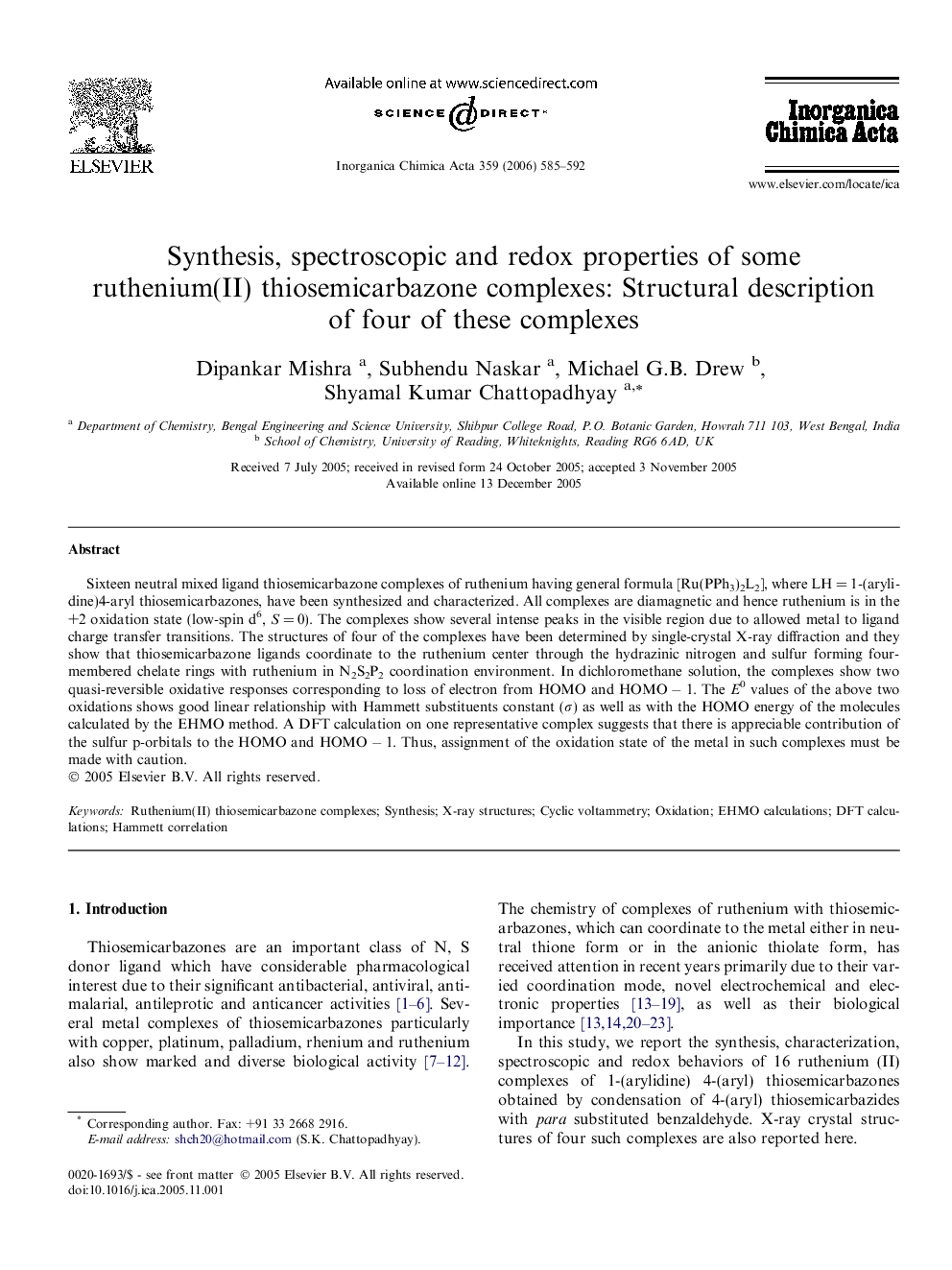| کد مقاله | کد نشریه | سال انتشار | مقاله انگلیسی | نسخه تمام متن |
|---|---|---|---|---|
| 1311774 | 975353 | 2006 | 8 صفحه PDF | دانلود رایگان |

Sixteen neutral mixed ligand thiosemicarbazone complexes of ruthenium having general formula [Ru(PPh3)2L2], where LH = 1-(arylidine)4-aryl thiosemicarbazones, have been synthesized and characterized. All complexes are diamagnetic and hence ruthenium is in the +2 oxidation state (low-spin d6, S = 0). The complexes show several intense peaks in the visible region due to allowed metal to ligand charge transfer transitions. The structures of four of the complexes have been determined by single-crystal X-ray diffraction and they show that thiosemicarbazone ligands coordinate to the ruthenium center through the hydrazinic nitrogen and sulfur forming four-membered chelate rings with ruthenium in N2S2P2 coordination environment. In dichloromethane solution, the complexes show two quasi-reversible oxidative responses corresponding to loss of electron from HOMO and HOMO − 1. The E0 values of the above two oxidations shows good linear relationship with Hammett substituents constant (σ) as well as with the HOMO energy of the molecules calculated by the EHMO method. A DFT calculation on one representative complex suggests that there is appreciable contribution of the sulfur p-orbitals to the HOMO and HOMO − 1. Thus, assignment of the oxidation state of the metal in such complexes must be made with caution.
Sixteen neutral mixed ligand thiosemicarbazone complexes of ruthenium of general formula [Ru(PPh3)2L2], have been synthesized and characterized. The structures of four complexes have been determined by single crystal X-ray diffraction. In dichloromethane solution, the complexes show two quasi-reversible oxidative responses. A DFT calculation on one representative complex suggests that there is appreciable contribution of the sulfur p-orbitals to the HOMO and HOMO − 1. Thus, assignment of the oxidation state of the metal in such complexes must be made with caution.Figure optionsDownload as PowerPoint slide
Journal: Inorganica Chimica Acta - Volume 359, Issue 2, 20 January 2006, Pages 585–592